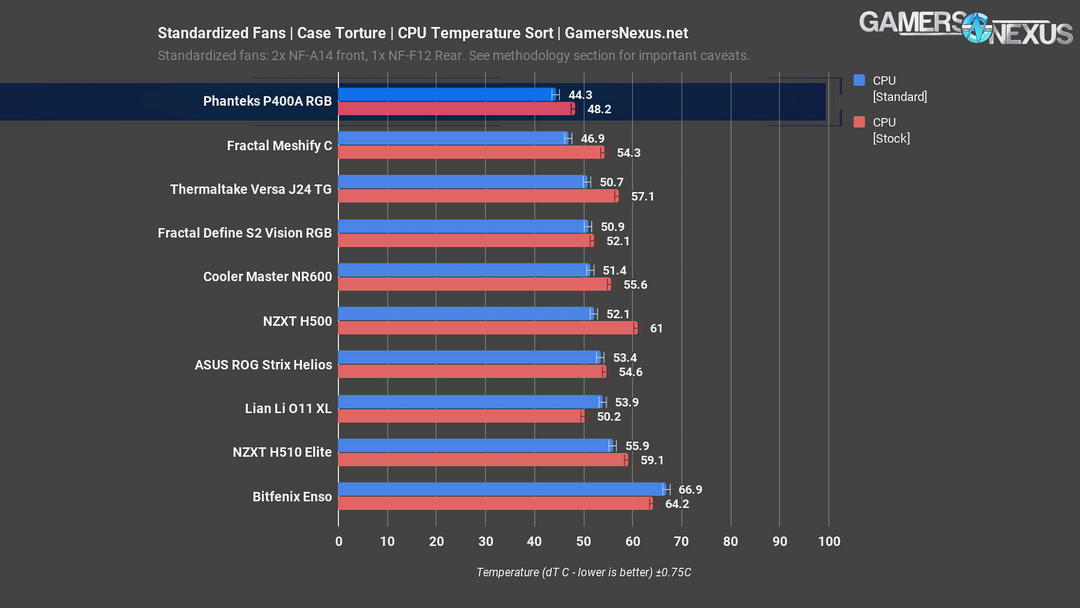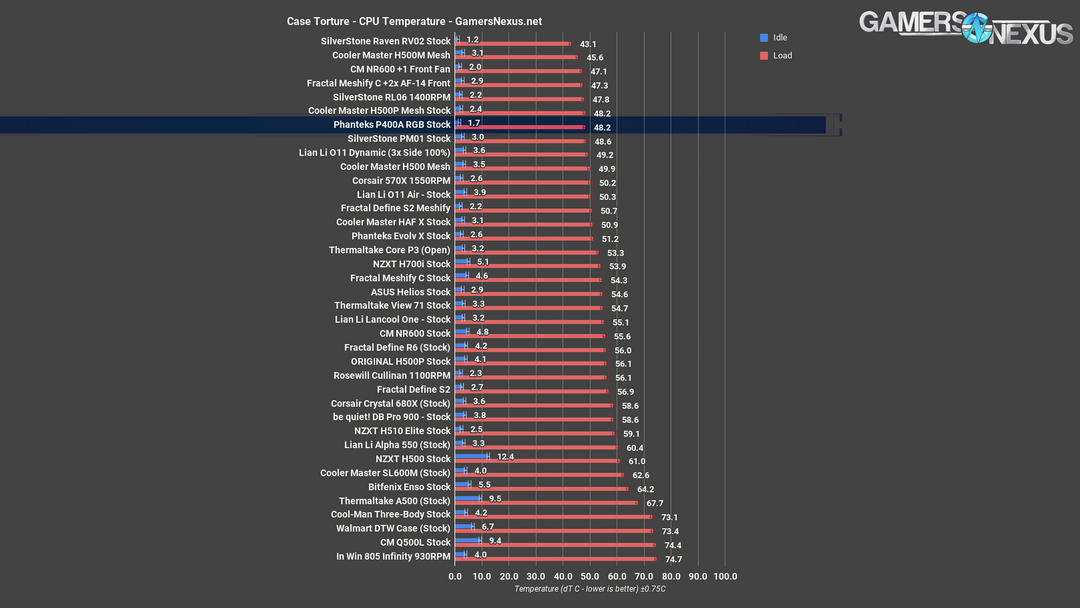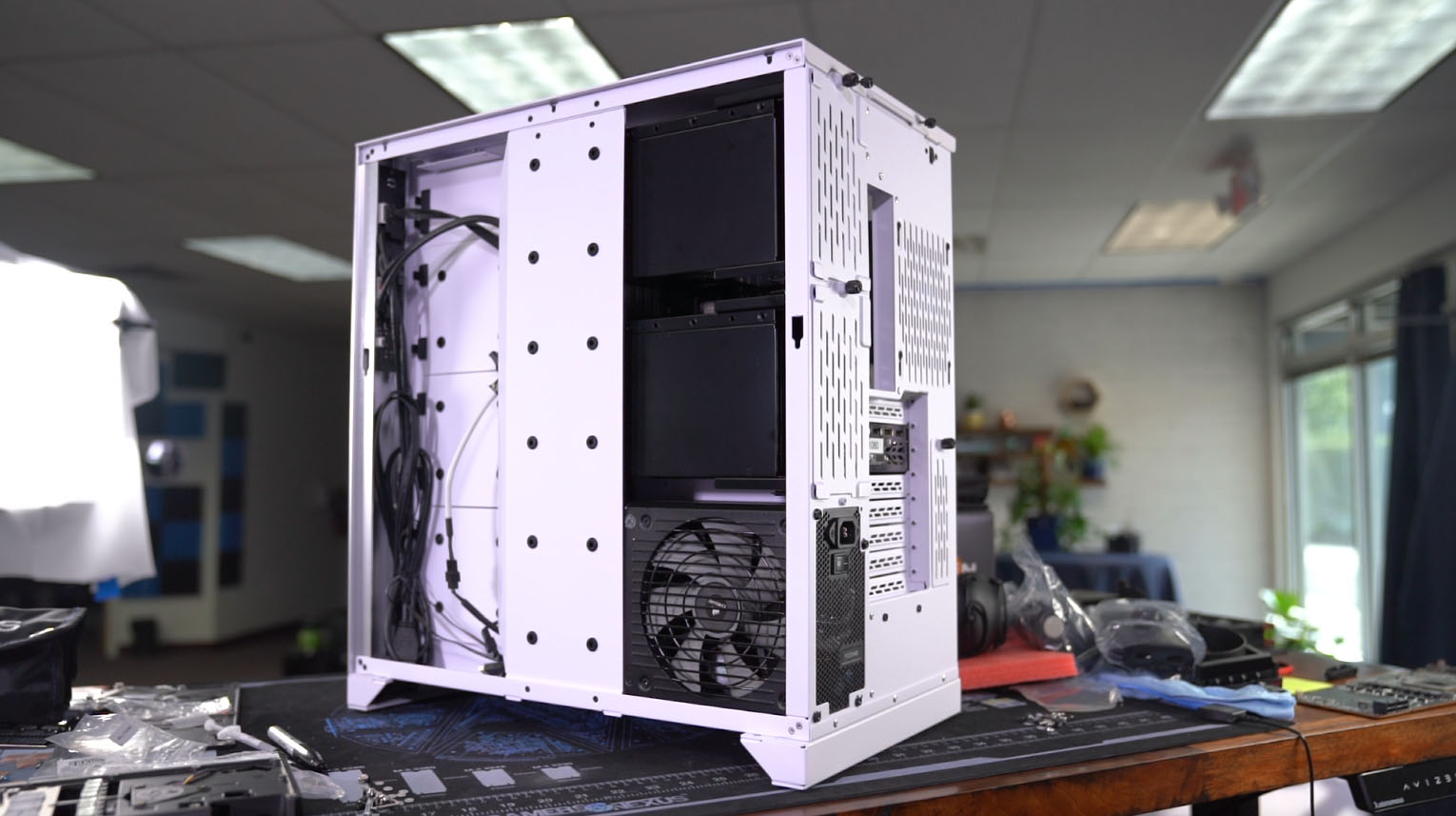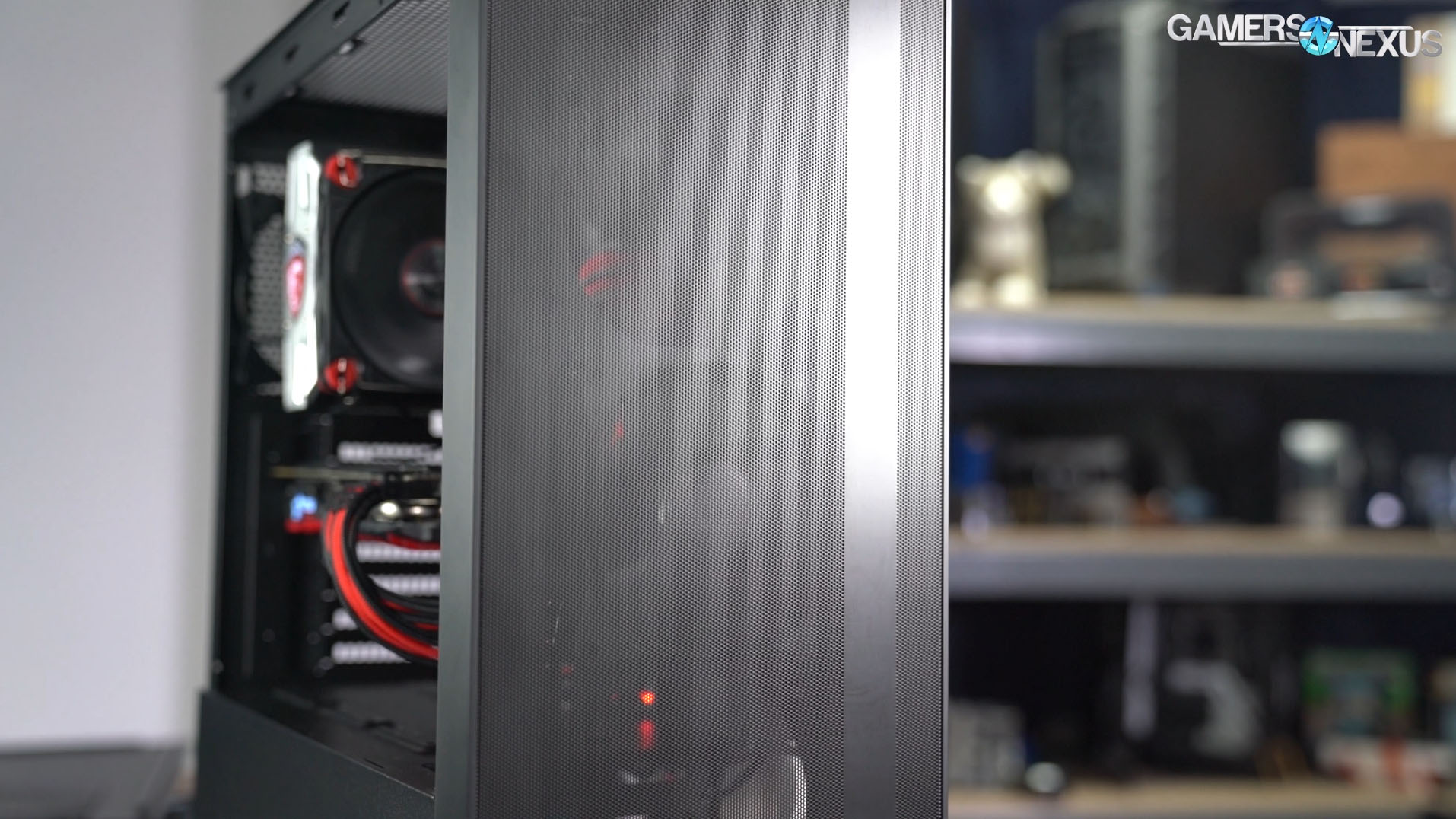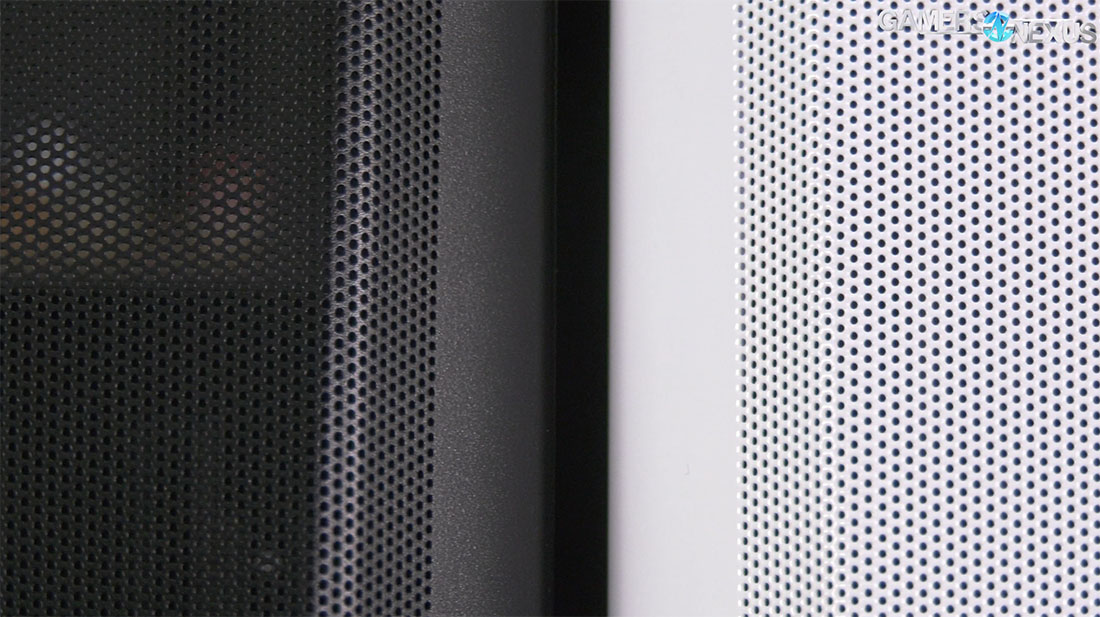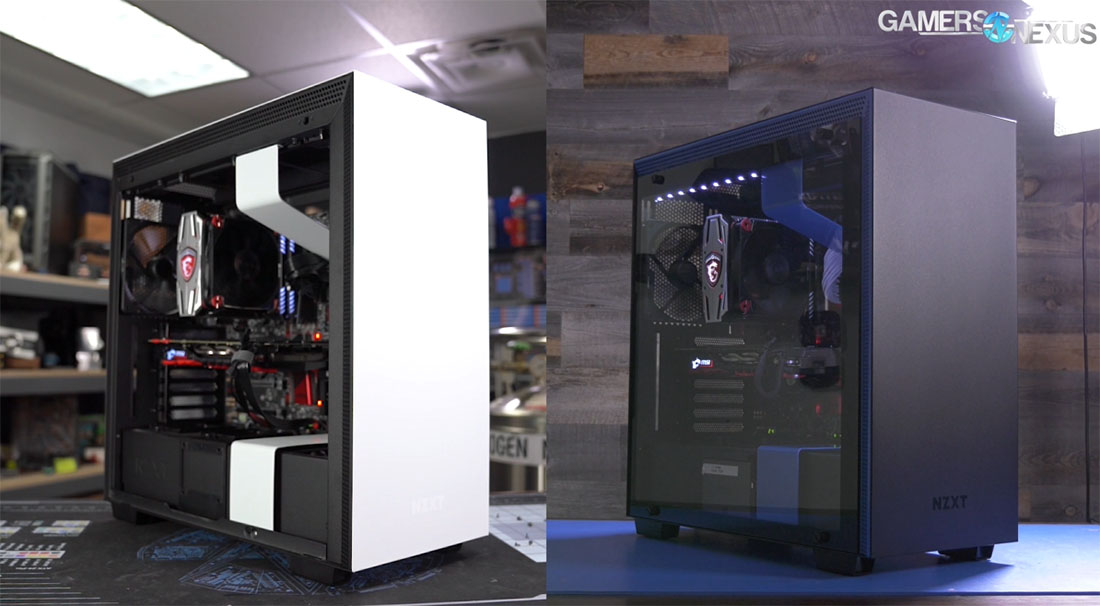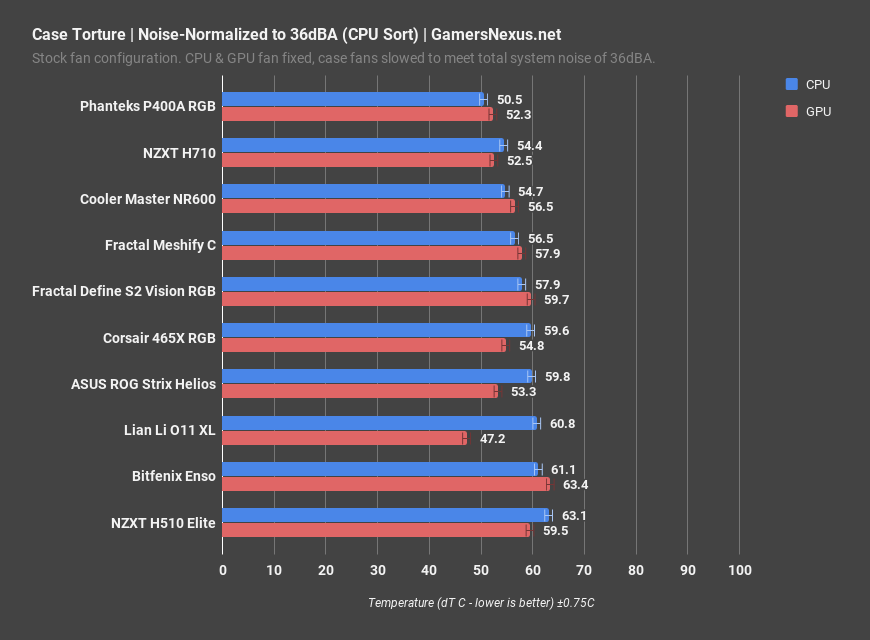GN Awards Show: Best & Worst PC Cases of 2019 (Thermals, Quality, Noise)
Posted on
It’s that time of year again where we decide which case manufacturers deserve our praise and a GN Teardown Crystal, and which deserve eternal shame and have to pay $19.99 for their own Teardown Crystal from store.gamersnexus.net. Last year, the Lian Li O11 Dynamic took the prize for Best All-Around, and the Silverstone PM02 and Fractal Define S2 took home the “Best Worst” Trend award for the unforgivable sin of being pointless refreshes. Also, the PM02 is just a bad case. This year’s award nominees pick up from where we left off, starting with the lackluster Thermaltake Level 20 MT in December of 2018. Spoilers: it didn’t win anything.
With over 220 rows of case data now -- or maybe more, we haven’t really checked too recently -- there’s a lot to consider in our round-up of the best cases for 2019. Fortunately, that list instantly gets whittled-down to, well, just 2019’s data, which is still populous. With the prevalence of several bad cases this year, we can narrow the list further to focus on only the most deserving of recognition. This article will continue after the embedded video.
Best Overall (Thermals & Design): Phanteks P400A (Digital)
Find the Phanteks P400A Digital on Amazon
We’ll start off with this year’s overall winner: The Best Overall award goes to Phanteks for its $90 P400A enclosure. Our review and our thermal measurements focused on the Digital version of the case with a mesh front panel and three RGB intake fans. It’s not hard for a mesh-fronted case to excel in the thermal category, but the P400A in particular uses a fine metal mesh rather than having an extra filter layer to catch dust. Thermal performance with the Digital’s three intake fans, price, and the mesh front panel are what make the P400A our winner, as on the inside it’s an inexpensive steel chassis that Phanteks has used in multiple products--but at the same time, reusing that chassis is part of what makes the P400A so cheap.
In our exhaustive review of the P400A Digital, we found that performance was functionally equivalent with both the white and black front panels, debunking some earlier theories that the paint might inhibit airflow, and also found that the CPU thermal improvement from panel-less results had minimal gain over the stock performance. This is good. Provided sufficient static pressure, the P400A does excellently while maintaining a mesh that is fine enough to stop a good deal of dust. We’ll talk more about the case’s thermals in our Best Out of the Box Thermals section later.
As for build quality, the P400A is one of the most basic cases possible, but that’s not a bad thing. The case offers about 2.5cm of clearance between the motherboard tray and steel side panel, including built-in velcro straps for cable management with greater depth. The P400A can also fit E-ATX motherboards as it lacks a cable management bar, although you’d face some cable routing restrictions in such a configuration. We also appreciate small features, like the external physical button controls for LEDs, rather than forcing reliance on software that no one wants.
Construction is overall thin and nothing special, but it’s heavily vented, and that’s a major upside.
We’ll talk about the Phanteks P400A again in a moment, but let’s first cover some cases that were even better in specific areas.
Best Mechanical Design: Lian Li O11 Dynamic XL
Find the Lian Li O11 Dynamic XL on Amazon
Next is the award for Best Mechanical Design, which we’re granting to Lian Li for its $200 O11 Dynamic XL. We went back and forth on this particular award. The O11 XL is an iteration on a case that was last year’s Best All-Around winner -- the O11 Dynamic -- and it has some cool new features, but one of our most memorable interactions with the case was snapping the fragile plastic tabs that secure a fan tray. That’s not a big plus in the Mechanical Design category.
Still, the strength of the O11 family’s layout is what makes up for this and pushes the O11 XL to the top of our list. The overengineered hot-swap HDD bays, the bottom-to-top airflow, the side intake that allows for a sealed front panel without ruining performance, and the flexibility of PSU mounting locations are all excellent features, and the XL’s extra size allows Lian Li some room to breathe with clearances on radiators and other components. The side intake covers are one of the most flexible parts of the design: they can be used as SSD mounts, removed to allow fan mounting, or replaced with an E-ATX extension for extra motherboard compatibility.
The O11 XL may not include fans, but it offers a large build canvas that’s well-suited for both air cooling and open loop cooling. This case uses thicker paneling for a sturdier build, hot-swap drive sleds with solid metal and handles, swappable PSU and HDD cage positioning, and a panel design that manages to offer security while still eliminating screws as compared to traditional cases. This is a larger version of Lian Li’s O11 Dynamic from last year, and it’s well-deserving of the O11 Dynamic XL award.
Best Budget Case: Cooler Master NR600
Find the Cooler Master NR600 on Amazon
Our next award is for Best Budget Case, which we’re assigning to the Cooler Master NR600. Although the combination of its name and look make it completely forgettable, the Cooler Master NR600 remains one of the better-built cases in the $60 to $70 class. The case ticks the boxes, but also implements the ultra-fine mesh that got the Phanteks P400A to the top of the charts. The NR600 has tempered glass, a mesh front, and all the basic requirements for a budget gaming PC. This is the kind of case Walmart SHOULD have been using for its DTW series, but then it’d not be completely terrible, so it probably didn’t fit the spec sheet.
The NR600’s fine mesh acts as a combinatory dust filter and air inlet, opting out of a secondary dust filter to maximize cooling capabilities. The case has some shortcomings, like its limited 140mm fan support despite the presence of mounting holes for said fans, but its sacrifices are overall compromised for by the price and presence of better features. The case didn’t meaningfully gain in our panel-less test, illustrating that it’s already able to breathe at its maximum potential in the stock configuration. As for build quality, although there are minor fit-and-finish issues, the case offers a generally standard interior for system building.
As an aside, people disagree all the time about what constitutes “budget.” Our definition is that it must still be an actually good case, objectively, while sitting in the $50 to $70 price-point. This case used to be closer to $60, but tariffs have pushed Cooler Master’s prices up in general, and we didn’t test any new $50 cases this year that were actually good.
We have an Honorable Mention for this category, but its price is too high at present to fit. We’ll still mention it in case the price comes down: It’d be the Thermaltake Versa J24. It’s more expensive than the NR600, but it comes with three 120mm fans. The main issue is that the front panel is an open grille backed by a dense foam filter, so users can either choose between suboptimal thermals with the foam in or good thermals with practically no filtration and the foam removed. Still, it seems like the 4-fan version is sometimes available for less than $70, which is a pretty good deal for users willing to do some light modding.
Best Out-of-the-Box Thermals: Phanteks P400A (Digital)
Find the Phanteks P400A on Amazon
The next GN Award is for Best Out-of-the-Box Thermals, a long-standing viewer-favorite meme that’s become reality with the Phanteks P400A. This section is why the P400A received Best Overall.
We broke a long dry spell for Phanteks content on GamersNexus when we reviewed the Evolv X in October of last year. It received our “Most Overhyped” award for 2018--it wasn’t a bad case, but it was more flash than substance, not the incredible game-changer that we’d been led to expect. Imagine our surprise, then, when Phanteks unveiled an airflow-oriented version of the P400, a case that we previously mutilated for poor performance. The P400A RGB scored high in performance results across all of our charts.
The CPU torture temperature of 48.2 degrees Celsius delta T over ambient for the stock P400A was on par with the Cooler Master H500P Mesh and the Silverstone PM01, while the 49.1-degree Celsius delta T result for the GPU fell between the PM01 and the H500M Mesh. It’s in excellent company in both categories, with only the real heavy-hitters like the HAF X and the RL06 reliably outperforming it out-of-the-box.
In noise-normalized thermals, where we set competing case stock fans to the same noise level to test efficiency and eliminate brute force performance, the Phanteks P400A proved itself a strong victor.
The key to its success is a mesh front panel with no additional filtration combined with three 120mm intake fans (in the RGB “Digital” version specifically). This isn’t a case that will hermetically seal-out dust, but it will do a great job of keeping components cool straight out of the box, no additional fans required. If you want a cheaper version, there’s the P400A non-Digital, but you’ll need to budget for some fan purchases.
Phanteks has come a long way in the past few years and we hope to see the company continue to improve in its thermal awareness.
Best Noise Levels: Fractal Meshify S2
Find the Fractal Design Meshify S2 on Amazon
The next award is for Best Noise Levels, which we’re bestowing upon the Fractal Meshify S2.
Technically, the best-scoring case on our noise chart since our last round of awards is the Thermaltake A500 TG; however, we reserve the right to not give awards to cases that aren’t good. The A500 only tested well for noise because of its sealed front panel, and Thermaltake launched the case with an insane $250 MSRP, which is exactly what it continues to cost today as it sits on warehouse shelves.
Instead, this award goes to the Fractal Meshify S2. Our review of the Meshify S2 was subdued in its praise since we’d already seen Mesh-ifications and S2s from Fractal (and we gave the S2 an award for being a pointless refresh), but the case itself is solid. We don’t typically associate mesh-fronted cases with low noise levels, but Fractal’s use of relatively slow 1000RPM Dynamic X2 GP-14 140mm fans in combination with the mesh means that little noise is generated while still maintaining acceptable airflow. That, and we haven’t reviewed any be quiet! cases this year to compete with it. We’re giving this award for noise levels, not noise suppression--adding aftermarket fans to the Meshify S2 will absolutely make it noisier.
Best Noise-Normalized Thermals: NZXT H710
Find the NZXT H710 on Amazon
Noise normalizing for thermals is a new test that we added just this year, so we don’t have test data for a couple of the eligible cases. Still, it’s a safe bet that the P400A RGB would win even if we did--it was already at 38.6dB for the torture tests that won it Best Out-of-the-Box Thermals, and we noise normalize down to 36dBA.
However, Phanteks has enough awards already, and we’d like to spread the love and give some deserved recognition to the NZXT H710. During 100% fan speed torture tests, it was at 39.6dBA, but slowing it down to hit the 36dBA threshold had it tied with the P400A RGB in our GPU thermals and about 4 degrees Celsius warmer in CPU dT. That’s got something to do with the four fans NZXT stuck in there to make up for their hotbox design, but, much like Jay, we digress--we’ve complained plenty about the way NZXT’s thermals are going, and it’s important to recognize that noise-normalized thermals are one category where they can still do well. If there’s a single good thing about sealing off the front panel and relying on side intake vents, it’s that fan noise can’t blast the user.
The NZXT H710 follows-up on the H700 design that we previously liked, primarily for its industry-leading build quality at the price-point and superior cable management. The noise-normalized performance is a bonus. We really, really want to see NZXT try a mesh case, but the company doesn’t seem interested.
Best Case We’re Currently In The Process Of Testing: Lian Li Lancool II
The next award is not actually an award, but more of a teaser for something to look forward to (because we know a lot of you will ask about this case). This category is called “Best Case We’re Currently in the Process of Reviewing,” and it goes to the Lian Li Lancool II. If you’re asking how many cases we’re in the process of testing, the answer is 1.
We’ve gotten a ton of requests to review the Lian Li Lancool II. Yes, we have the case, and yes, we’re in the process of reviewing it now. It’s different enough from the Lancool One that it’s already gotten some points just for not being another halfhearted refresh, but we don’t want to hand out one of our other awards until we’ve gotten some hard performance numbers. It’s hard to argue with a $90 case with features like hot-swappable drive bays and hinged magnetic doors, though. Stay tuned for this one.
“Best Worst” Trend in Cases: Pointless Product Segmentation
Our final award is for the “Best Worst” trend in cases, this time assigned to Pointless Product Segmentation. We also assigned Intel and AMD this “Worst Trend” award in our CPU round-up for 2019.
The case industry has confused itself with its multivarious options now afforded by RGB, ARGB, tempered glass, steel, sound damped panels, and fan counts. Rather than pick a few SKUs that are objectively good, many of the manufacturers have opted to just make everything and dilute the market with garbage.
The Bitfenix Nova Mesh is the most recent example of this: Although Bitfenix addressed our criticisms of the Enso, sort of, by improving thermal performance and meshifying its cases, the company also split the product into far, far too many variations. Just to be clear, the part of the Nova Mesh we’re shaming here isn’t its performance: it’s the fact that there are so many different nearly-identical case SKUs. This year’s worst trend is stuffing digital shelves with as many different versions of the same case as possible. Searching “Bitfenix Nova” on Newegg at the time of this writing turns up a whopping 26 results, with separate listings for the original Nova, Nova [Acrylic] Window, Nova TG, Nova Mesh, Nova Mesh TG, Nova Mesh TG RGB, Nova Mesh TG ARGB, as well as separate listings for black or white versions of each case and some third-party retailers. None of the cases we’ve reviewed are as bad about this as the Nova, but there are plenty of manufacturers doing this--even the P400A has a base and a “digital” version, and is a refresh of the P400 which already had several variants. There has to be a better way to do this, and it might be a more modular approach where a base chassis is sold with upgrade packs available.
Conclusion
The industry is trending toward more airflow-oriented cases, which is a good thing. Processors going forward have now adopted the same type of frequency/thermal scale as GPUs, as we’ve proven time and again, and running hot cases will cost performance in both CPU and GPU departments. There were still a lot of bad cases: Corsair contributed some of them (680X), but Fractal also contributed a few of the poorer cases we reviewed (like the Vision).
Hopefully the above list will help in PC builds for Black Friday, Cyber Monday, or just the holiday season. This list recaps some of the best computer cases and gaming cases that we’ve reviewed this year, and with actual, proper hands-on time, you get reliable data alongside our conclusions. If interested in the individual reviews, we’ve got them all on the site and YouTube channel.
Editorial, Testing: Patrick Lathan
Editorial, Test Lead: Steve Burke
Video: Josh Svoboda
